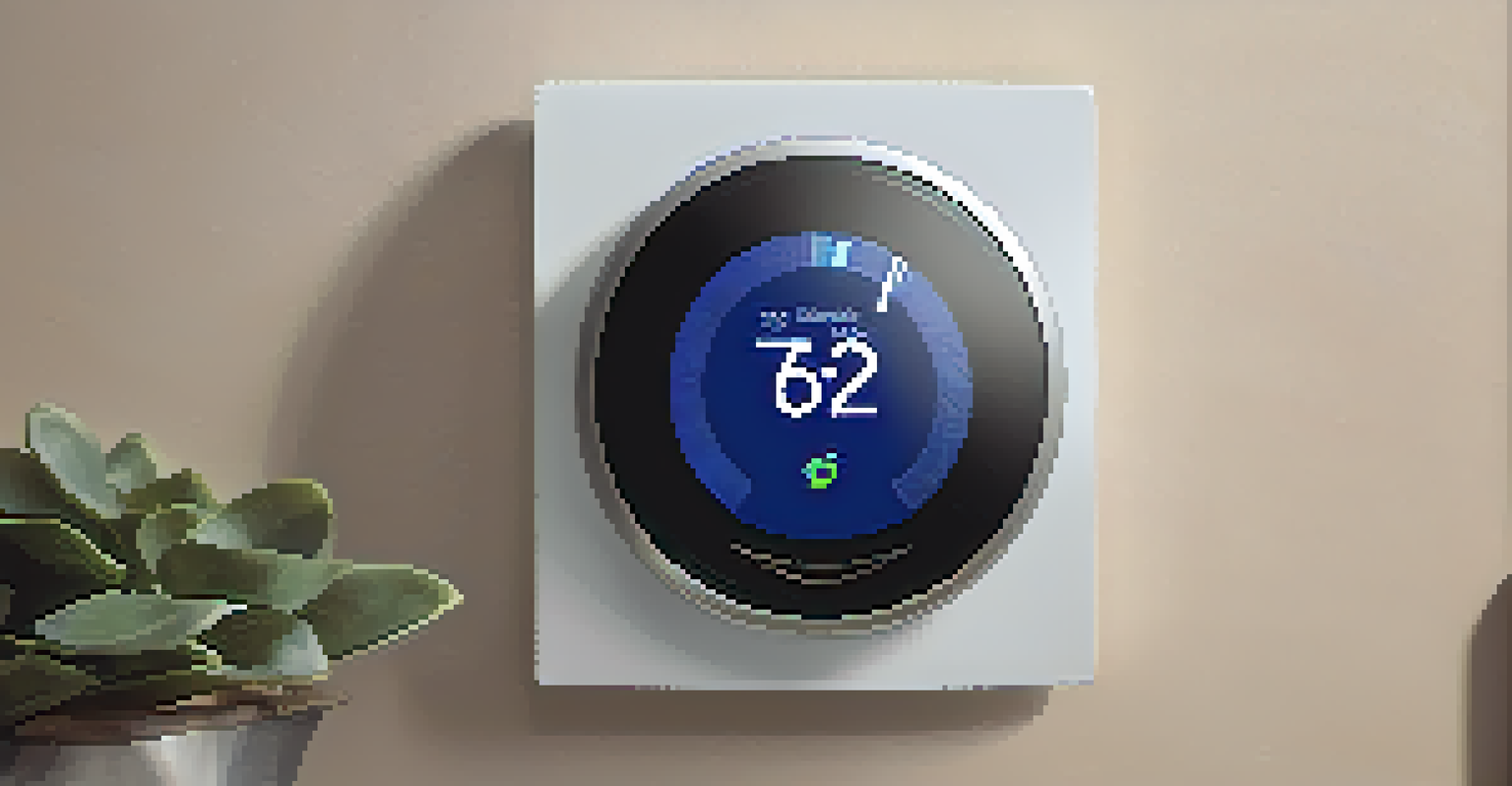Understanding Smart Home Protocols for Energy Management

What Are Smart Home Protocols and Why Do They Matter?
Smart home protocols are the languages that smart devices use to communicate with each other. Imagine trying to have a conversation in a room full of people speaking different languages; it would be chaotic! These protocols ensure that devices like thermostats, lights, and security systems can work together seamlessly, enhancing convenience and efficiency.
The future is green energy, sustainability, renewable energy.
The importance of these protocols can't be overstated, especially when we think about energy management. A well-integrated network of smart devices can help reduce energy consumption by optimizing usage based on real-time data. For example, if your smart thermostat knows you're not home, it can adjust the temperature to save energy, all thanks to these communication protocols.
In essence, smart home protocols lay the groundwork for a connected environment that promotes energy efficiency. By understanding how these protocols function, homeowners can make informed choices about their smart devices, ultimately leading to a more sustainable living space.
Common Smart Home Protocols: Zigbee, Z-Wave, and Wi-Fi
Among the most popular smart home protocols are Zigbee, Z-Wave, and Wi-Fi. Zigbee is a low-power, mesh networking protocol that allows devices to communicate over long distances without draining their batteries. It's ideal for devices that need to stay connected but don't require constant data transmission, like motion sensors or light bulbs.

Z-Wave, on the other hand, is specifically designed for home automation and also uses a mesh network structure. This means that devices can relay messages to one another, extending the range and reliability of your smart home system. Think of it like a game of telephone where each device passes the message along until it reaches its destination, ensuring efficiency in communication.
Smart Home Protocols Enhance Efficiency
These protocols enable seamless communication between devices, optimizing energy usage and reducing consumption.
Lastly, Wi-Fi is widely recognized and allows for high-speed data transfer, making it suitable for devices that require more bandwidth, like security cameras or smart speakers. However, it can consume more energy compared to Zigbee and Z-Wave. Understanding these protocols helps you choose the right devices for your energy management needs.
How Smart Home Protocols Enhance Energy Efficiency
Energy efficiency is one of the most significant benefits of smart home protocols. By allowing devices to communicate and coordinate their actions, these protocols enable smarter energy usage. For instance, if your smart thermostat receives data from your smart blinds about sunlight exposure, it can adjust your home's temperature more accurately, reducing unnecessary heating or cooling.
Technology is best when it brings people together.
Moreover, smart home systems can create schedules based on your lifestyle, automatically turning off devices when they're not needed. For example, lights can be programmed to turn off when everyone leaves the house, ensuring that energy isn't wasted. It’s like having a personal assistant who knows when to switch things off for you!
In summary, these protocols not only streamline communication between devices but also significantly contribute to reducing energy consumption. By harnessing this technology effectively, homeowners can see a noticeable difference in their energy bills and overall environmental impact.
Integration of Smart Home Protocols with Renewable Energy
Integrating smart home protocols with renewable energy sources, like solar panels, can amplify energy savings. Imagine your solar panels generating power during the day while your smart home system optimizes energy usage during peak times. This synergy allows homeowners to use clean energy more effectively, reducing reliance on traditional energy sources.
For instance, with smart home protocols, you can schedule heavy energy-consuming tasks, like running a dishwasher or washing machine, when solar energy is abundant. This not only maximizes the use of renewable energy but also minimizes energy costs, making your home more sustainable.
Integration with Renewable Energy
Combining smart home protocols with renewable sources maximizes energy savings and promotes sustainable living.
Furthermore, smart home systems can monitor energy production and consumption in real-time, providing insights that help homeowners make informed decisions. This level of integration is a game-changer, paving the way for smarter, eco-friendly living.
Challenges in Implementing Smart Home Protocols
While the advantages of smart home protocols are clear, implementing them can come with challenges. Compatibility issues often arise when devices from different manufacturers use different protocols, leading to frustration for homeowners. It's like trying to connect puzzle pieces that don’t fit together; the whole system can become inefficient.
Security is another concern, as smart home devices can be vulnerable to hacking. Ensuring that these devices communicate securely is crucial, especially when they control essential functions like heating or security systems. Homeowners must stay vigilant, keeping their software updated and choosing devices that prioritize security.
Lastly, the initial setup costs can be a barrier for many people. While the long-term savings can be substantial, the upfront investment in smart devices and infrastructure can be daunting. Understanding these challenges is key to navigating the smart home landscape effectively.
Future Trends in Smart Home Protocols for Energy Management
As technology evolves, so do smart home protocols. One emerging trend is the increased adoption of Matter, a universal standard designed to improve compatibility among smart devices. This means that regardless of the brand, your devices will be able to communicate more efficiently, making the smart home experience smoother and more user-friendly.
Additionally, advancements in artificial intelligence (AI) are set to enhance energy management capabilities. AI can analyze usage patterns and provide personalized recommendations that optimize energy consumption. It’s like having a smart coach guiding you to make better energy choices based on your habits.
Challenges in Smart Home Adoption
Homeowners face compatibility issues, security concerns, and initial setup costs when implementing smart home technologies.
Finally, as renewable energy becomes more mainstream, we can expect smart home protocols to become more integrated with energy grids, allowing for real-time energy management. This will empower homeowners to take control of their energy usage, making homes not just smarter, but also more sustainable.
Getting Started with Smart Home Protocols
If you’re ready to dive into the world of smart home protocols, start by assessing your energy management needs. Consider what devices you want to integrate and how they can work together to improve efficiency. For example, if you’re focused on reducing heating costs, a smart thermostat and smart blinds could be a great combination.
Next, research the protocols that best suit your devices. If you're leaning towards Zigbee or Z-Wave, ensure that your chosen devices are compatible with these protocols. Alternatively, if you prefer the familiarity of Wi-Fi, look for devices that leverage this technology effectively.

Finally, don't hesitate to seek advice from experts or online communities. The smart home landscape is constantly evolving, and learning from others’ experiences can help you make informed decisions and create a smart home that meets your energy management goals.